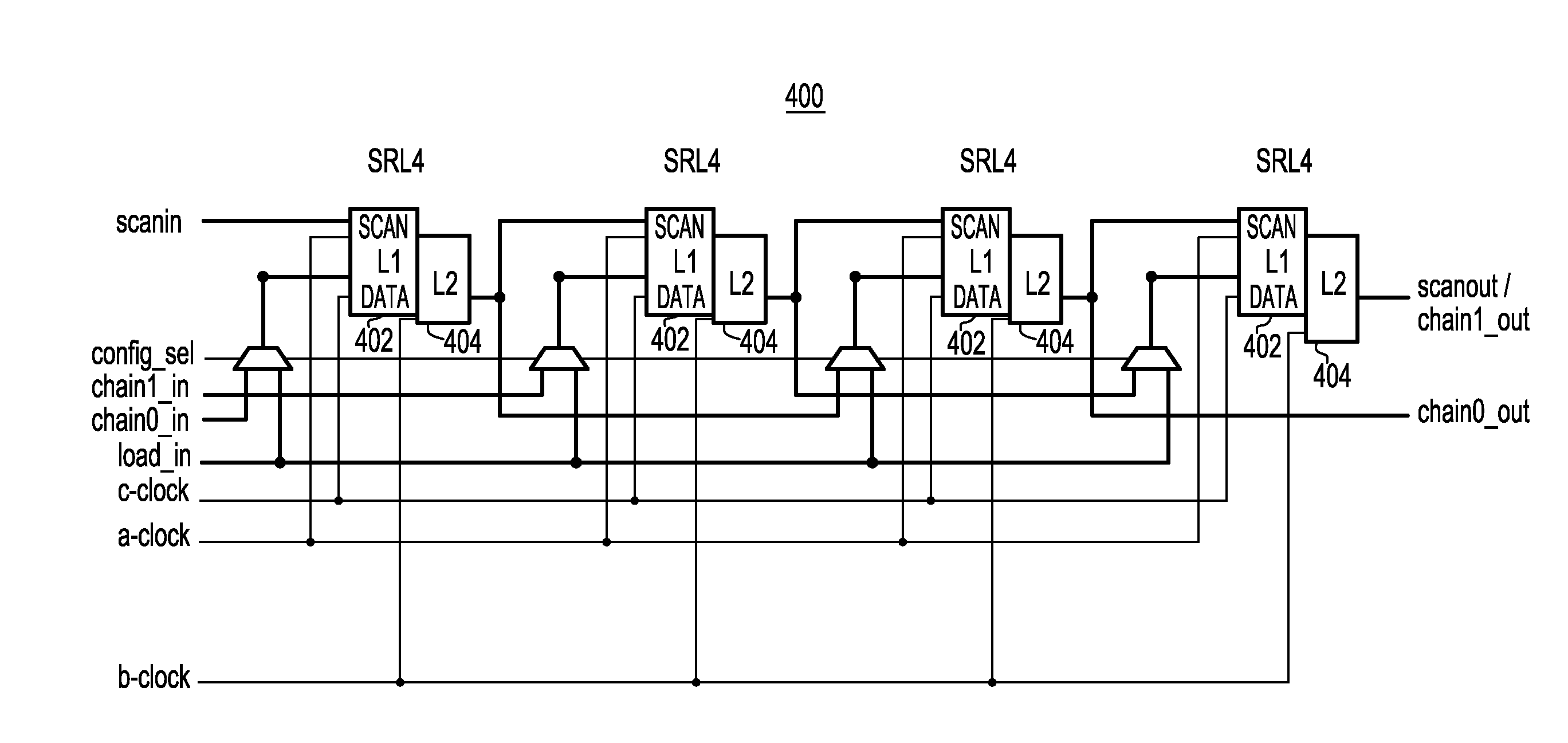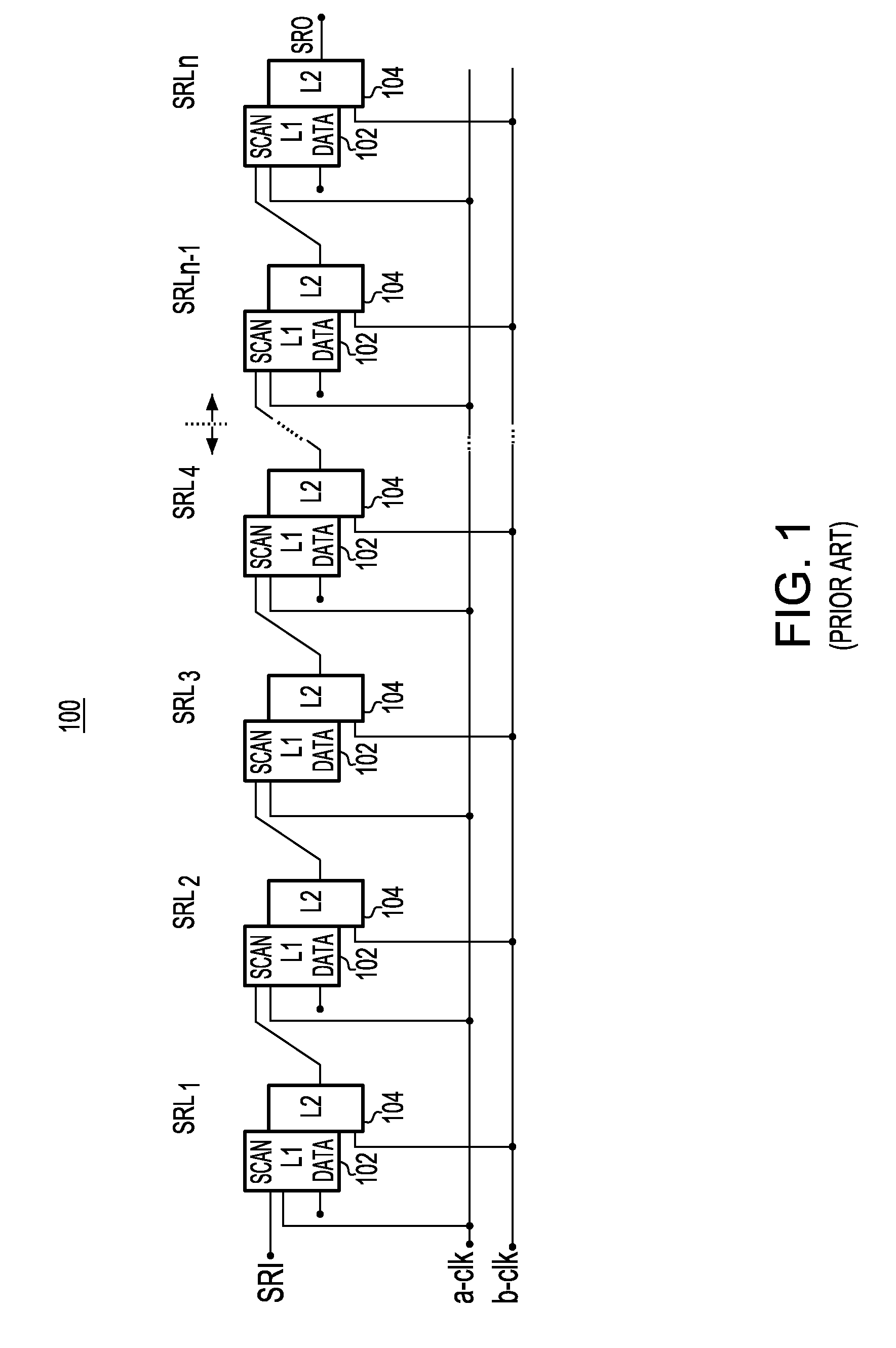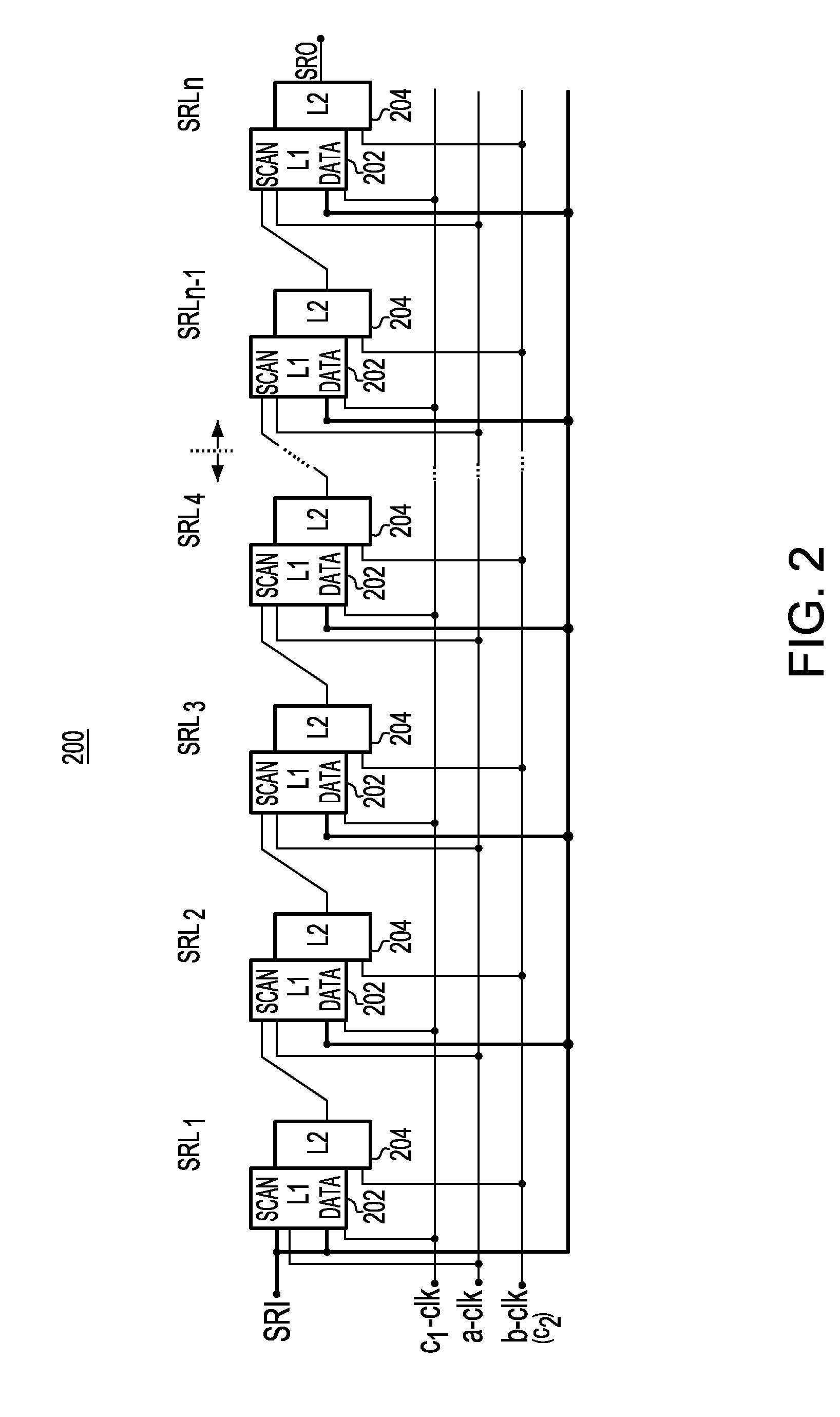Diagnosable general purpose test registers scan chain design
a general purpose, scan chain technology, applied in the direction of error detection/correction, instruments, computing, etc., can solve the problems of significant part of the cost associated with the manufacturing of semiconductor products, vlsi circuit wafers, and scan chains themselves may also be defectiv
- Summary
- Abstract
- Description
- Claims
- Application Information
AI Technical Summary
Benefits of technology
Problems solved by technology
Method used
Image
Examples
Embodiment Construction
[0042]Referring to FIG. 2, there is shown an SRI GPTR scan chain 200 including a chain of shift Register Latches (SRL), SRL1-SRLN, each including a master latch L1202 and a slave latch L2204. The master latch L1202 has a pair of data ports SCAN and DATA, that may be captured by the latch responsive to a first scan clock A-CLK or a first functional system clock C1-CLK. All the L1202 latches system port attached to the Shift Register Input (SRI). The slave latch L2204 captures the value stored in the master latch L1202 responsive to either a second scan clock B-CLK or a second functional system clock C2 CLK. The second scan clock B-CLK and the second functional system clock C2 CLK are combined as a single clock signal B / C2-CLK. The second scan clock B-CLK and the second functional system clock C2-CLK are typically driven out of phase with both the first scan clock A-CLK and the first functional clock C1-CLK applied to the master latch L1202.
[0043]FIG. 3 illustrates an alternate latch ...
PUM
 Login to View More
Login to View More Abstract
Description
Claims
Application Information
 Login to View More
Login to View More - R&D
- Intellectual Property
- Life Sciences
- Materials
- Tech Scout
- Unparalleled Data Quality
- Higher Quality Content
- 60% Fewer Hallucinations
Browse by: Latest US Patents, China's latest patents, Technical Efficacy Thesaurus, Application Domain, Technology Topic, Popular Technical Reports.
© 2025 PatSnap. All rights reserved.Legal|Privacy policy|Modern Slavery Act Transparency Statement|Sitemap|About US| Contact US: help@patsnap.com



